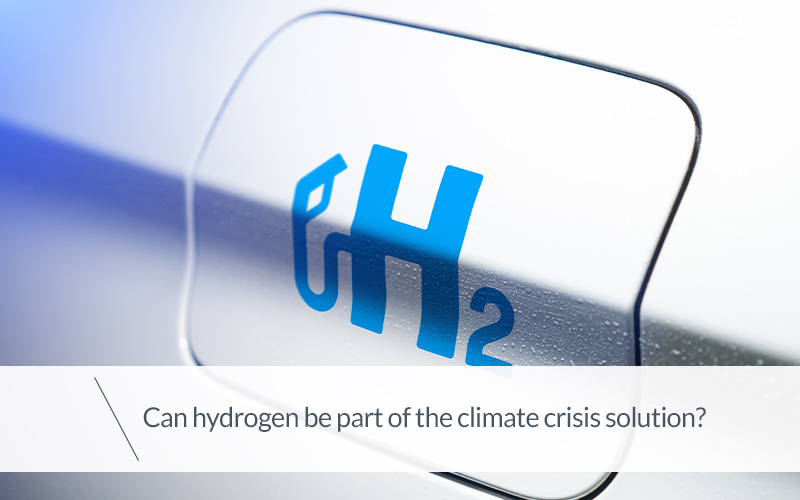
The problem of global warming and increasing release of CO2 emissions into the atmosphere, 200 years after the start of the Industrial Revolution and following the colossal industrialisation of some developing countries (India, Cina, South-East Asia, Brazil and South Africa), is becoming progressively worse each day.
Ecological change is beginning to happen and the no-return point appears closer, according to data issued by the scientific community.
The adoption of new green energy sources, alternatives to fossil fuels such as petroleum and natural gas, has not reached the needed levels, in particular in those countries that need huge quantities of energy to accelerate development - just as the West did right from the start of the industrial revolution, after all.
So, in this particular scenario, the energy source that many single out as the possible solution to our climate problems, green hydrogen, becomes extremely interesting.
But can hydrogen really become part of the solution? Let’s dive deep and find out.
Hydrogen: pros and cons
Jeremy Rifkin, author of the 2002 book “The Hydrogen Economy: The Creation of the Worldwide Energy Web and the Redistribution of Power on Earth”, defines hydrogen as “the perpetual energy” upon which to build an energy system similar to the World Wide Web.
Almost twenty years have gone by since then, and hydrogen energy is still an unkept promise due to a series of practical, real, scientific and technological issues.
To better understand why perhaps we need to point out the pros and cons of adopting hydrogen as an alternative energy source.
- Pros:
- it is a renewable and unlimited source
- it does not produce harmful emissions, but just water vapor and clean water
- it’s extremely powerful when used as a fuel
- it has a superior yield compared to other energy sources in use as fuel - for example, a hydrogen-fueled car will travel further than a petrol-fueled car when using equal quantities of each fuel.
- Cons:
- despite being the most common element in the universe, it is not readily available in nature in its free state (H2) and this means it has to be produced, for example by removing it from water; a complex and expensive process
- a considerable amount of energy is required to split the hydrogen atoms from the oxygen (electrolysis)
- it is highly explosive, making storage, transport and usage complex and dangerous
- it must be kept and transported at high pressure, further complicating the process.
Barriers to be overcome
In economic terms, today it is still not worth investing in hydrogen to replace fossil fuels, but from a climactic point of view, it is without a shadow of a doubt the cleanest energy source we have.
Unfortunately, as we mentioned, to be used it needs to be produced, or more exactly, extracted, and this in itself requires energy, cancelling out any advantages.
However, by adopting alternative clean energy sources for the electrolysis process, it ought to be possible to re-balance the issue.
At this point, it would be simply the problems associated with safety that remain to be addressed, as hydrogen is a highly flammable gas.
Hydrogen as an energy vector
Whilst citing hydrogen as an alternative and clean energy source, we must remember that it does not exist in a free state in nature - that is to say, unbound to other chemical elements - in concentrations such that would allow it to be adopted.
In brief, we don’t have a reserve of hydrogen as we do of petroleum and natural gas, and it is not available for immediate use such as solar and wind energy or other renewable sources.
Hydrogen, as we have discussed, needs to be produced. For this reason, an interesting application for the gas could be to use it as an energy vector, which means adopting it to store and transport energy.
What is the current status?
The roadmap has been set out. The planet needs clean energy sources, which do not produce CO2, and hydrogen really could be the light at the end of the tunnel.
Currently, there are two main issues to tackle:
- to make hydrogen production via electrolysis both clean and cost-effective
- to reach acceptable safety standards
An interesting scientific paper published in Nature in 2019 entitled “Economics of converting renewable power to hydrogen”, observes that the precipitous fall in the price of renewable energy could favour hydrogen’s status as a fuel.
The production of renewable hydrogen, therefore, becomes economically sustainable if the combined cycle plant investment has an actual net positive value, and if this value exceeds the actual value of the renewable energy plant alone.
“However, if the acquisition prices for electrolysers and wind turbines continue on their respective recent learning curves, our findings project that, in about a decade, renewable hydrogen will also become competitive with the lower prices paid for large-scale industrial hydrogen.”
Thus, in the future, the possibility of increased hydrogen production from clean energy sources is high, provided that governments and institutions create the right conditions for this to occur.



